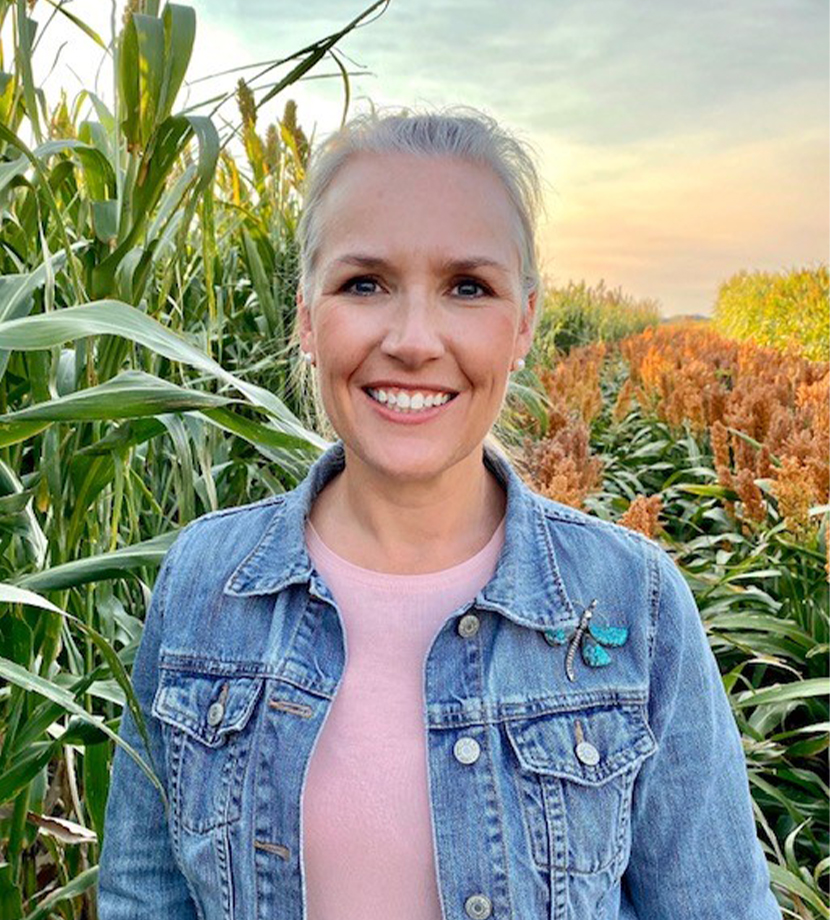
Swipe For More >
 The Texas Panhandle is an important agricultural region at a junction because of declining saturated thickness in the Ogallala Aquifer. Through research and working collaboratively with agriculture producers, Texas A&M AgriLife Research and Extension Professor and Agronomist Jourdan Bell, Ph.D., is taking steps toward a shared goal—water conservation.
The Texas Panhandle is an important agricultural region at a junction because of declining saturated thickness in the Ogallala Aquifer. Through research and working collaboratively with agriculture producers, Texas A&M AgriLife Research and Extension Professor and Agronomist Jourdan Bell, Ph.D., is taking steps toward a shared goal—water conservation.
“It is so important as an agronomist and soil scientist to learn how we can improve agronomic management to ensure agricultural sustainability,” she said. “We want to be farming in the Texas Panhandle 100 years from now.”
Bell said sorghum is part of the answer and is working with producers to diversify irrigated cropping systems and conserve water.
Bell first started working with sorghum as a research technician for the USDA-ARS Conservation and Production Research Laboratory in 1997. With USDA-ARS, she first worked in dryland cropping systems focusing on tillage and manure management, and sorghum was a primary component of that research. She eventually went on to pursue a doctoral degree in soil science from Texas A&M, but she said sorghum remained a crop of focus.
Having both extension and research appointments provides Bell the opportunity to work directly with producers as well as address regional agronomic issues through applied research activities. On the flip side, she enjoys mentoring students, as well.
“As a female, I am so appreciative of my mentors, and I hope to provide the same mentorship for other female students,” she said. “But, as a mother of boys, I also know how important it is for our young boys and men to have mentors.”
Bell said it is exciting to see students who come from an agriculture background become excited about research as they develop a better understanding of agronomic principles, and it is also exciting to see students who do not come from an agriculture background realize that not everyone in the industry is a farmer.
“Growing crops is like growing students,” she said. “It is amazing to see how they both grow.”
###
This story originally appeared in the Fall 2020 Issue of Sorghum Grower magazine as a feature.


